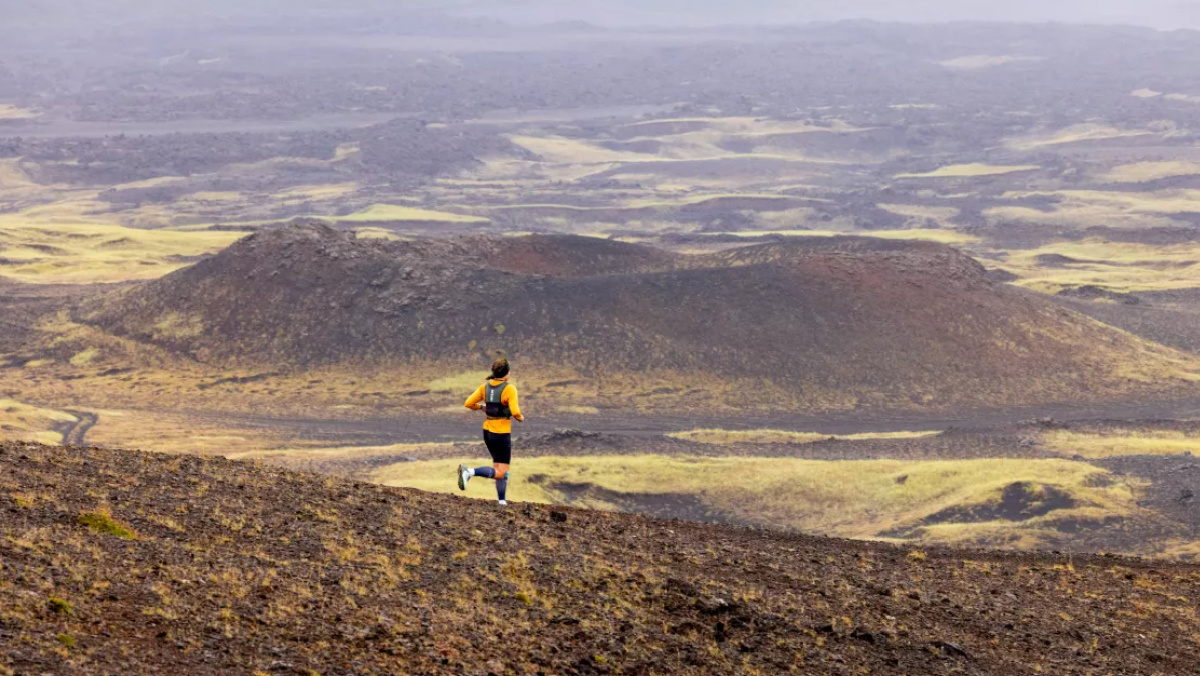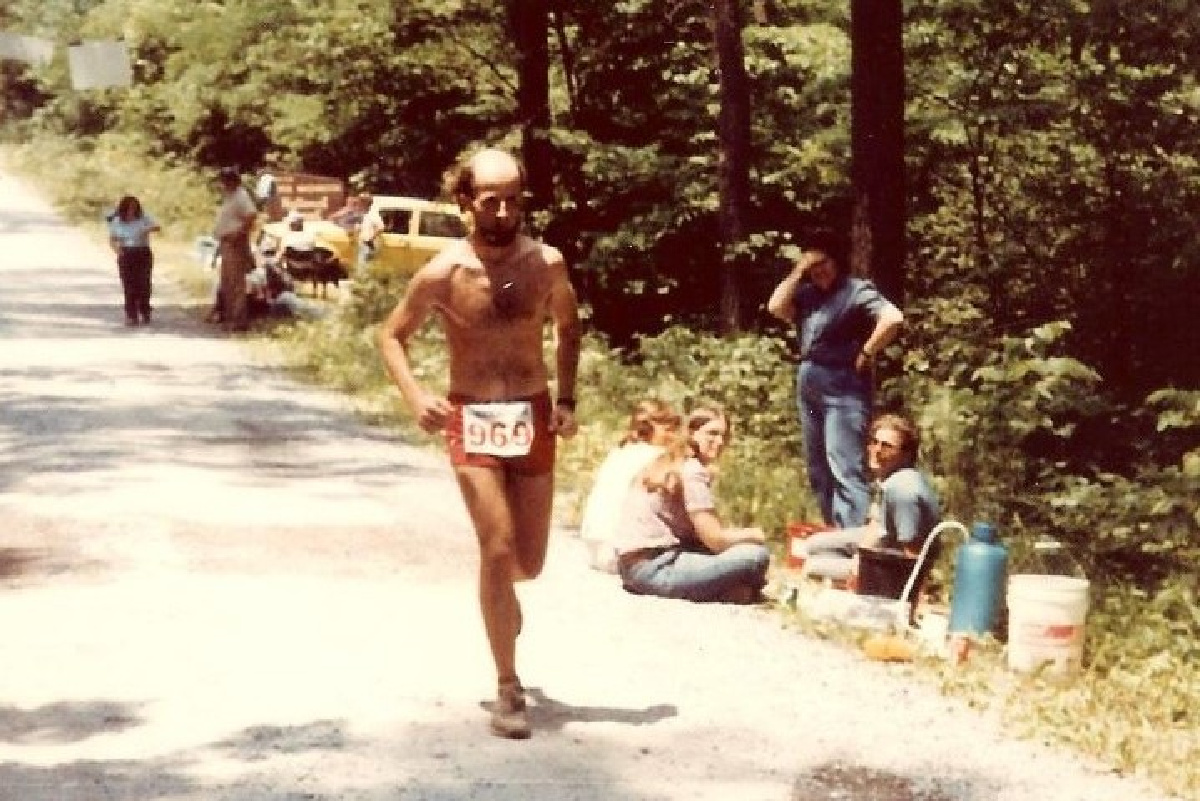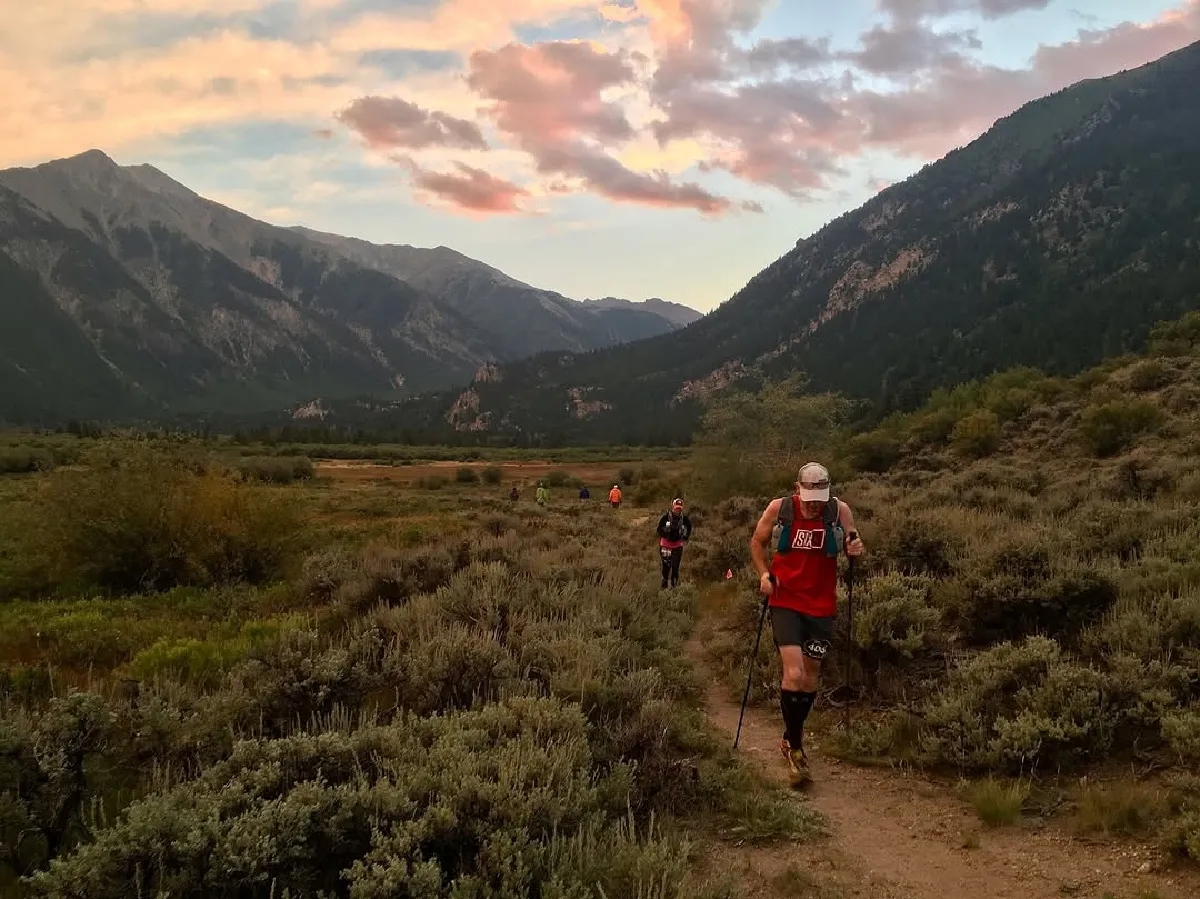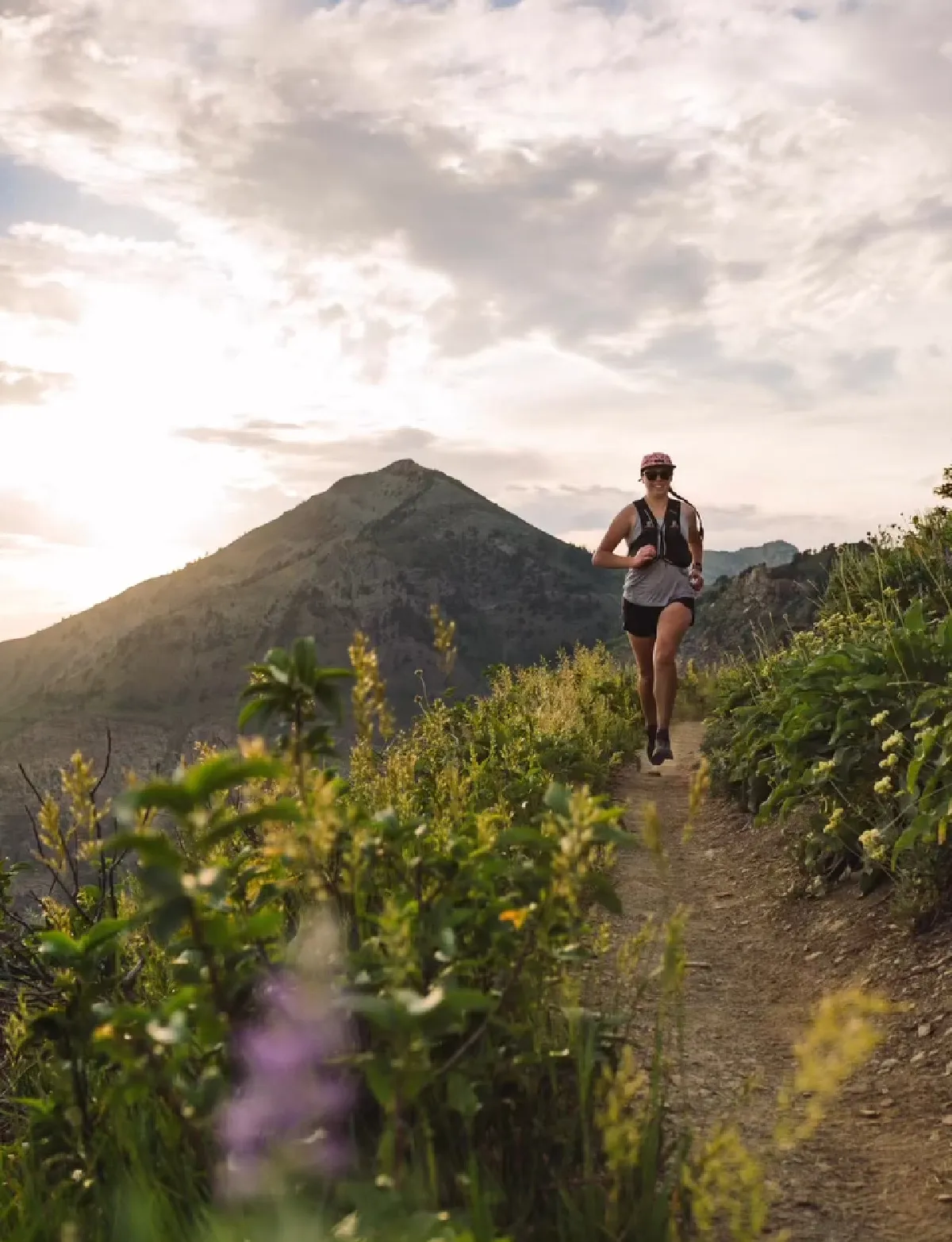We often hear about the Marathon Majors, but they aren’t the only big race series with elite runners, big prizes and loyal following. Find out more about the Grand Slam and why you need to pay more attention!

The Grand Slam of Ultrarunning consists of five 100-mile races across the United States, and is considered one of the most demanding endurance challenges in the sport of running – or really any sport out there, for that matter.
Completing the Slam means finishing four of the five races in one summer, with the only required race being the Wasatch Front 100. The other four races to consider are Old Dominion, Western States, Vermont, and Leadville. It oddly seems that the rules around the Grand Slam change by the year, but the Wasatch is a standard requirement and 4 is a requirement.
If you’re thinking this sounds like an insane challenge that could be both beautiful and crazy hard, you’re right.
Let’s break down what it takes to get to one finish line, never mind four.
How The Grand Slam of Ultrarunning Began
In 1986, Tom Green completed four 100-mile races in one season. The feat had never been accomplished before, and at the time, there were only four established 100-mile races in existence: Western States, Old Dominion, Leadville, and Wasatch Front.
After Green made history, others began trying to repeat his feat, making the Grand Slam an official challenge among ultrarunners everywhere. Does this sound familiar? Kind of like how Ironman became a thing? We runners really do love to always see if we can’t on up each other!
The Vermont 100 was later added due to scheduling conflicts, but some ultrarunners still attempt to complete all five for an “Unofficial Super Slam.”
As if running 400 miles, and some 70,000 feet of vertical isn’t hard enough, many of these race entries are done via lottery which means it’s even harder to make it all happen in a single calendar year.
Grand Slam Races
All right, as noted there are 5 potential races in the Grand Slam, but the Wasatch is the 1 required race and it’s the last race of the year. Let’s take a look at these intense runs to get a better idea of what it takes to complete.
As with all trail races, while they are 100 miles…it’s variable, could be 101, 103, that’s trail running.
Western States (California, USA)
- Established: 1977
- Distance: 100.2 miles (161 km)
- When: Late June (usually the last weekend)
- Start: Squaw Valley (Olympic Valley), near Lake Tahoe
- Finish: Auburn, California
- Total Elevation Gain: ~18,000 feet (5,500 m)
- Total Descent: ~23,000 feet (7,000 m)
- Cutoff Time: 30 hours

The Western States 100-Mile Endurance Run is sometimes referred to as the “crown jewel” of ultramarathons, and for good reason.
From the starting line in the Sierra Nevada mountains, participants climb the Emigrant Pass and then descend through rugged, remote canyons. They will face a mix of climates, from snow to extreme desert heat, all in the same day.
They also cross the American River, along with other steep climbs and descents.
Volunteers support runners with aid stations and medical support along the way, but there are long stretches when they are left to their own devices.
This is a bucket-list race for elite ultramarathoners from around the world, and though winning times are often under 15 hours (men) and 17 hours (women), it’s a major accomplishment to finish under the 30 hour requirement.
The final hour before the cutoff is called the “Golden Hour,” and runners describe it as a deeply emotional time watching others finish in time, or getting there themselves.
Participant jslug1 says his experience was “iconic.”
“Was and still is one of the iconic trail races in the US. Lots of hype and lots of activities pre-race at race HQ. The race starts with a several mile climb up the escarpment.
The top gives a great view of lake tahoe area. From there it’s rolling hills, mostly single track all the way to the canyon portion of the race.
The canyons are hot and the descent and ascents are significant, with Devil’s Thumb (47) and Michigan Bluff (55) climbs taking almost 2 miles each. Once you reach Foresthill (62miles-super fun and exciting aid station) you can have a pacer join you and if your legs are feeling good the rolling (mostly) downhill to the American river crossing can be fast. Once crossing the river its a short, steep climb to Green Gate (80). The final 20 miles are “runnable” single track, although still rolling. There is a good bit of uphill in the final miles to reach the road at Robie Point aid station(99) and a steep hill just past it, but from there its a joyous downhill to the track at Placer HS and the finish line.”
Old Dominion 100 (Virginia, USA)
- Established: 1979
- Distance: 100 miles (160.9 km)
- When: Early June (typically the first Saturday)
- Start/Finish: Woodstock, Virginia (in the Shenandoah Mountains)
- Total Elevation Gain: 14,010 feet (4,270 m)
- Total Descent: 14,000 feet
- Cutoff Time: 28 hours

This ultrarun is not as popular or commercialized as the others, but the old-school, grassroots feel is beginning to appeal to more and more runners seeking authenticity.
The race emphasizes self-reliance, grit, and tradition – aid stations are farther apart than the other races, and runners are expected to be experienced and self-reliant.
The trails is remote in places and cell phone service can be spotty, so runners really have to be on top of their game.
Runners trace a single-loop course through Virginia’s George Washington National Forest, traversing gravel forest roads, paved paths, and rocky trails as they gain in elevation.
Temperatures vary widely so runners will have to be prepared, and indeed the race entices those prize grit and tradition over flash.
There is a strong sense of community surrounding the Old Dominion 100, and everyone who finishes in the qualifying time is honored, not just those who finish first.
Random Forest Runner really loved his experience:
“First, thank you so much to the people who created the Old Dominion 100, the many who have kept it going, and all the volunteers who have made it possible each year. And thank you to my family for joining me as my crew (even with a 4 AM start, yikes).
Old Dominion has a history dating back to 1979 (the second oldest 100 miler). It’s part of the Grand Slam of Ultrarunning, along with Western States, Leadville, Vermont, and Wasatch. Any four of the five counts for the slam.
At one time it was a highly competitive event, along with other east coast classics. The only one that has really retained that level of competition is the JFK 50 Miler. I’m glad that Old Dominion has kept its low key atmosphere – no sponsors, no fanfare, not even a tracker. Just show up and run. I love that and hope it doesn’t change.”
Vermont 100 (Vermont, USA)
- Established: 1989
- Distance: 100 miles (also features a 100K)
- When: Mid-July
- Start/Finish: Silver Hill Meadow in West Windsor, VT
- Total Elevation Gain: 17,000 feet (5182 m)
- Total Descent: 17,000 feet
- Cutoff Time: 30 hours

Officially known as the Vermont 100 Mile Endurance run, this was the final race to join the Ultrarunning Grand Slam.
The feature that sets this race apart from all of the others is that ultrarunners and horseback riders compete simultaneous on overlapping courses. They start at different times but use the same trails and aid stations; mutual respect has always been a hallmark of this race.
The weather in Vermont can be unpredictable, and runners often contend with swings in temperature, muddy conditions, and potential precipitation.
The humidity and mosquitoes make this one more uncomfortable than might seem obvious at the outset.
The course itself consists of 70% class 4 forest roads and jeep tracks, with the rest of the paths being trails and rolling countryside.
The scenery consists of farms, forests, meadows, and the quaint stone walls and barns that make Vermont scenery famous. Volunteers and spectators really get into the race, often with themed setups and costumes, music, the works.
vtrunnermom says it was magical.
“I love that this race raises money for Vermont Adaptive Ski and Sport. It has a home town feel, great volunteers, stocked aid stations…you get to run alongside horses and their riders…magical weekend!”
Leadville 100 (Colorado,USA)
- Established: 1983
- Distance: 100 miles (160.9 km)
- When: The third weekend of August
- Start/Finish: Downtown Leadville
- Total Elevation Gain: Over 15,600 ft (4,750 m) of total gain
- Total Descent: 15,800 feet
- Cutoff Time: 30 hours

“The Race Across the Sky,” aka the Leadville Trail 100 Run, is one of the most iconic 100-mile ultramarathons in the world.
The backdrop of Colorado’s Rocky Mountains is a big reason why, but those same mountains also bring challenges along with their majesty – runners deal with altitude, terrain, and weather along their way.
Parts of the course are steep and rutted, sometimes dusty, and there is a race-defining climb at Hope Pass that puts the toughest runners to the test.
Runners struggle with oxygen levels out and back, and many want to give up as they climb 2,600 feet in 3 miles. The weather can change from baking sun to pelting hail within minutes.
Cutoffs are strictly enforced at this run, and many runners are pulled after failing to meet checkpoint times.
The community loves this run, and the gritty, grassroots vibe is all about toughness of body and spirit.
markb_elt says it was definitely a challenge, as promised:
“Finishing Leadville is enormously difficult. I think we all know that but it is hard to conceptualize without doing it. This was my first 100-miler (had done 3 50-milers), but I felt great about my training. I live in Colorado and do a ton of training between 7,000-10,000 feet.
The weather was perfect. I really felt pretty good the entire race. No stomach issues. Felt great going up Hope. Hit Winfield in 12:15.
And my finish time was 29:41. It is just really, really hard.”
Wasatch Front 100 (Utah, USA)
- Established: 1980
- Distance: 100 miles (161 km)
- When: September, the first Friday after Labor Day
- Start: East Mountain Wilderness Park, Kaysville, UT
- Finish: Soldier Hollow, Wasatch Mountain State Park, Midway, UT
- Total Elevation Gain: ~24,000 feet (7,300 m)
- Total Descent: ~23,300 feet
- Cutoff Time: 36 hours

The Wasatch Front 100 is arguably the hardest race in the Grand Slam in addition to being the last – or more aptly, partly because it is the last.
Not only are the rugged Utah mountains – brutal and beautiful – giving you a run for your money, but you’ve also already run 300 miles in the previous 10 weeks, and your body and mind are tired.
The Wasatch itself is known for extreme elevation, technical trails, and climbs that will put ever participant to the test. It was dubbed “100 miles of heaven and hell” somewhere along with way, and the organizers have totally embraced the accidental motto.
The trail includes steep climbs that seem endless, followed by equally relentless descents. There’s loose rock and overgrown bush to content with, as well as long, remote sections between aid stations.
The weather can change on a dime, and runners could deal with heat, cold, storms, snow, or all of the above during their day-and-a-half on the trails.
The Wasatch 100 is last because it’s last on the calendar, but it’s definitely not to be taken lightly.
Selim423 had a bit of a rough go, but no regrets.
“The first half of this course is absolutely beautiful. There’s a ton of ridge running and even though the climbing is a bit steep in the beginning you are rewarded with relatively easy, stress-free long steady downhill.
If you are not careful you will likely encounter chapped lips, wind burn and sunburn. Prepare for these contingencies.
Additionally if you’re allergic to bee stings or wasp stings make sure you bring along an EpiPen. I was stung in the hand and my hand is now swollen. It was excruciating for about 10 minutes but now everything just itches.
It gets incredibly cold at night. You should pack your warmer clothes for pickup at Lambs or earlier if you’re running slower. I found that using a space blanket was remarkably effective at keeping me warm and keeping the load light.
you will need a light at the beginning of the race and several batteries for the nighttime trekking.”
Entering the Grand Slam
These races have small fields and more stringent entry requirements than many marathons, so let’s check out what you’ll have to do if you want to enter one (or all) of them.
Western States Entry Requirements/Lottery
This is one of the most popular ultraruns in the world, and so the lottery is highly competitive. Thousands of hopefuls apply every year, and only around 300 runners are accepted.
Participants must complete a qualifying 100K or 100-mile race within a certain tain frame, though certain top finishers or those who receive “golden tickets” may be able to bypass the line.
Old Dominion 100
There are no lotteries or special rules for this one, just old school registration.
Vermont 100
You do not have to run a qualifying race to enter, but obvious experience is necessary to finish a race like this one.
Almost all entries are through a lottery, but only around 350 runners are accepted every year.
A wait-list typically opens in January every year.
Leadville 100
This one also uses a lottery system, but there are other options for entry as well. It opens in December the year before the race, but as with the other races in the Ultrarunning Grand Slam, spaces are extremely limited.
There are also Leadville qualifier races that offer guaranteed entry, as well as spots for charity entrants and repeat participants.
Wasatch Front 100
Like the majority of these races, you’ll have to get your name pulled from a lottery if you want to participate.
You also have to have completed a 50-mile run within the qualifying period if your name does come out of the proverbial hat.
These races are not to be undertaken lightly, but if ultrarunning is your jam, one or all of them are surely on your bucket list!
What to read next?
- Best Trail Runner Gifts
- Ankle Strength Exercises for Trail Running
- See all of our trail running shoe reviews



 Craft Xplor Pro Review | A Speedier Road to Trail Option
Craft Xplor Pro Review | A Speedier Road to Trail Option
